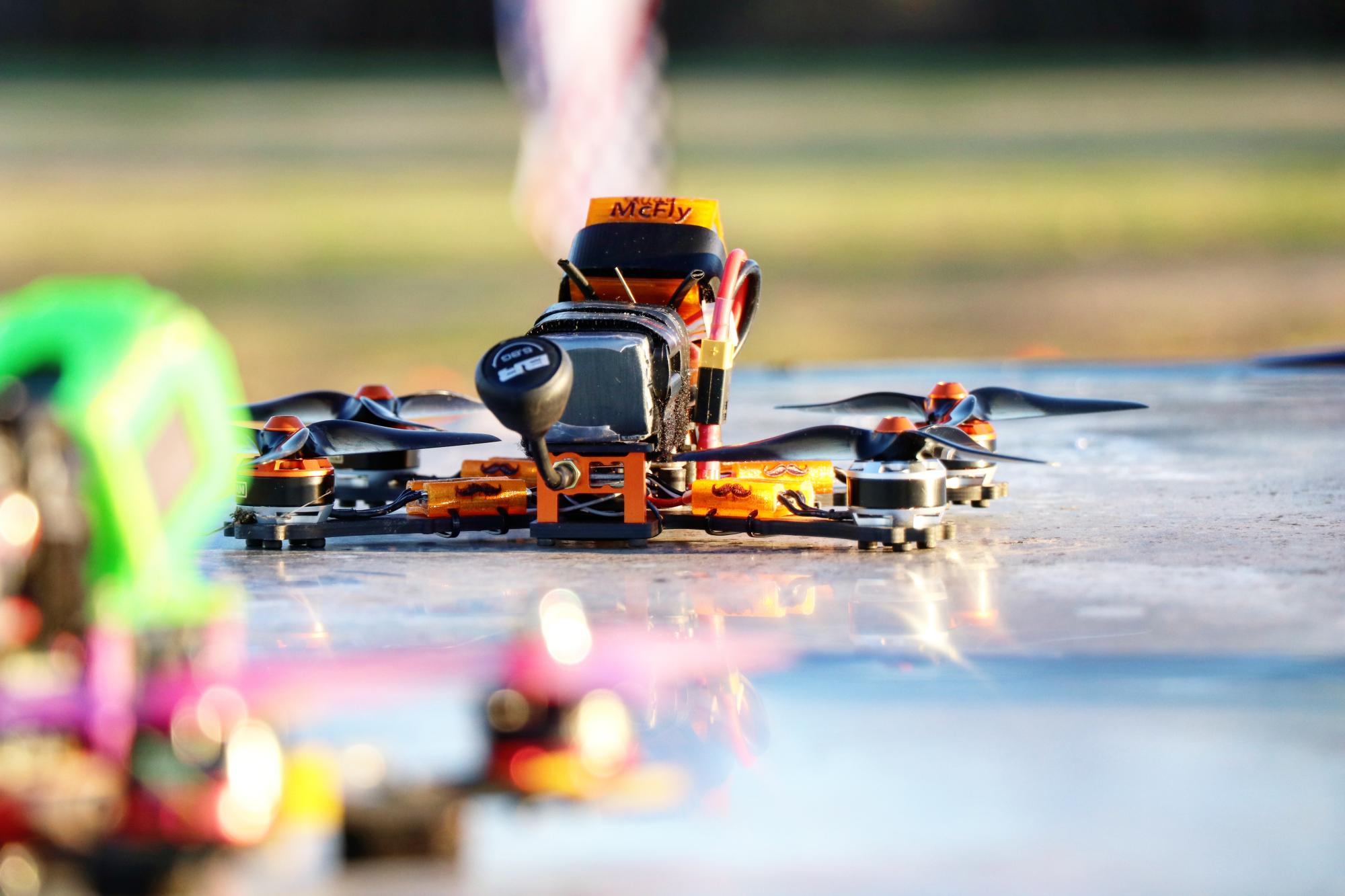- Home >
- Results >
- Motor Tests >
- Mid KV >
- T-Motor F40II 2305 2400kv
This is the latest iteration of the expansive F series of motors from T-Motor. These are fairly early prototypes and there will still be some changes before the final release.
Check out the full list of motors in this series here
Summary
Now on to the bench results!
Test Results
The extra mm in stator diameter is really showing its power here. These motors blew away even the strongest 2205 N52 motors. There are two factors to that performance. This motor also tested at 2400kv rather than 2300kv. The combination of the new magnets (I think N50SH, not N52 as some have said, but I haven't heard any official confirmation), higher KV, and larger stator size make this motor a major powerhouse. The downside here is the increased amp draw, but keeping this motor on lighter props, like the 5x4x3, still hitting 1300grams, but at more managable current at 30A. Anything above that starts really drawing the amps even with some crazy numbers. The 6x4 hits above 1500g sustained thrust, but at 37A! If T-Motor can indeed get the weight lower, this will be a killer motor for 5x4x3. It already comes very close to the Emax RS2205 2600kv in terms of power with faster transition speeds thanks to the larger stators and lower KV. It's a very interesting motor, and I'll be curious to watch the design progress, as well as curious to test the high KV versions.
UPDATE 09/05/2016: I received the final production version of the F40 2305 2400kv and decided to put it to some more vigorous testing, and it turns out I learned something important. I figured given the extra mm of diameter that I would run it through the same set of props I use on the 2206 mid-KV motors and see how much torque it could produce on heavy 5" props. In the process I found something very interesting about the relationship between stator height and stator width. I noticed early on that the current draw seemed high on this motor compared to equivalent 2206 counterparts, and boy did that escalate quickly! On the 5" props up to the 5x4x3 the current draw on this motor is about 2A above what I would consider typical for the amount of thrust produced on a given prop under static load. On heavier props it only gets worse. On 5x4.5x3 HBN props, the current is starting to climb, but still manageable. At 5x4.5x3 square tip bullnose props the current draw skyrocketed and the motor essential imploded. The current shot up to over 42A and the resin coating on the windings boiled off and the windings fused. Essentially the extra mm of diameter is attempting to create torque that the motor can't actually produce on these heavy props. In typical 22 class motors (5 and 6mm) when the motor is over-propped the RPMs drop down and the current rise slows down. The motor simply stops trying to push harder and there is some buffer before the motor gets damaged. The extra mm seems to push the motor over that hump and causes catastrophic failure when overpropped. Basically it boils down to the fact that for small, relatively high KV (>2200kv or so) motors it is better to go up in stator height rather than out in stator diameter. Practically speaking this means be VERY careful how you prop this motor! 5x4.5x3 hybrid bullnose is really the heaviest prop I'd recommend on this motor. Anything higher than that risks catastrophic damage to the motor. Essentially this motor has a very low tolerance for over-propping. Even if it unloads enough in flight to not outrightly fry the motor, in hard turns and recoveries the load is likely enough to damage the windings over time. I also suspect that a poor tune or other variables that typically drive temperature and current rise could have a negative impact on these motors over time as well when combined with heavy props. My general conclusion here is that these will be very fast, high performance motors on light or mid range 5" props, run smoothly and have excellent build construction. As long as they are flown with appropriate props, they should serve well though will be a bit harder on batteries than some motors. The typical philosophy of over-propping, though, is a definite no-go on these. Exercise reasonable caution on heavy 5" props and any 6" props.










































